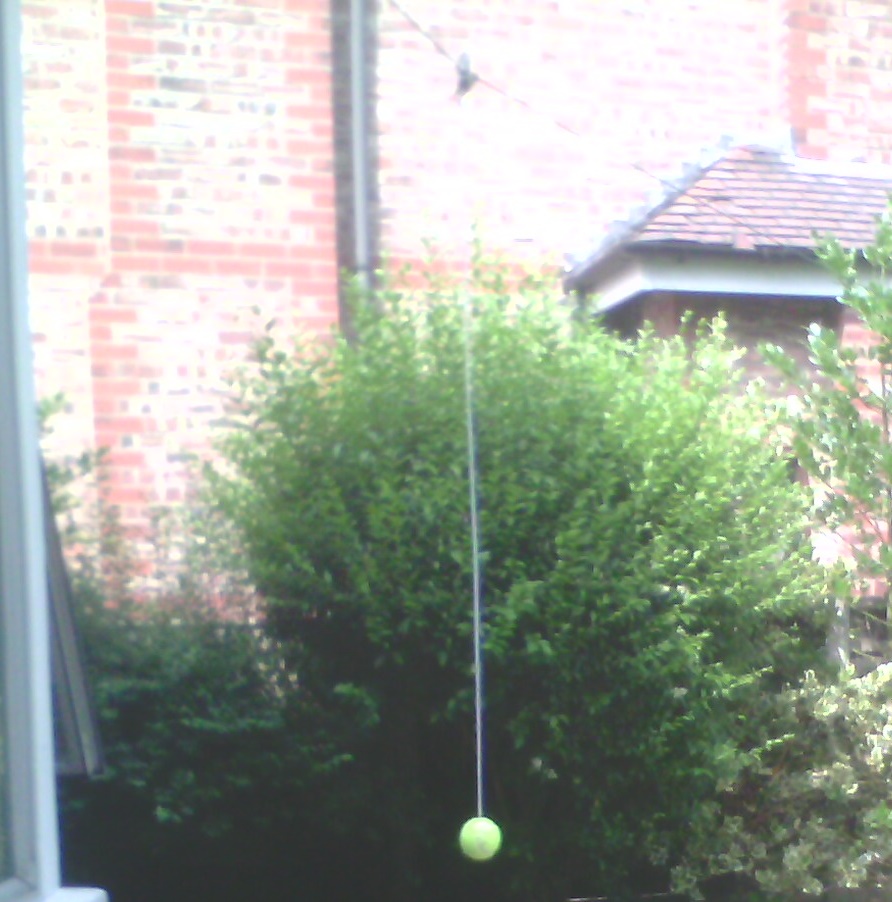All Alone
Softball is a team game and at first sight it might seem that there's not much you can do to practice your skills without at least one person being there with you. Happily that's a misleading impression and the keen player can do a lot to work on their game whenever they have a spare 5 minutes. It does help to have access to a garden or other piece of empty ground.
Pitching
Pitching is the easiest part of the game to practice alone. All you need is a bag of balls and something that will serve as a home plate. Pace or measure out 50' and start practising. Always wear your glove when you practice. I find it useful to have a target, placing a spare glove or similar about a foot behind the plate to make it easier to tell exactly where your pitches are landing. Beginners should just work on getting a consistent stride and delivery and throwing strikes. Once you are happy that you can throw strikes experiment with different pitching styles, but be sure you know and can go back to and repeat your stock default pitch for a strike at any time.
Batting
Air Swings
Practice your swing, without a ball. You can work on a variety of things, start with your normal game bat but you can also use a light bat or piece of dowelling to practice a fast swing, or a heavy or weighted bat to build up strength, concentrate on good technique. Once in a while try to pause at the contact point and compare your position against the 'ideal'. In particular make sure that you are getting your hips open and your belly button is facing the umpire at contact. If you have a suitable mirror watch your swing and check it looks "right".
Tee hitting
When it comes to practising your batting by yourself a batting tee is your best friend. Get a bucket of balls and a bat and hit away, hitting into a net takes up less space, as does using whiffle or other soft balls. You can even make your own low impact balls out of spare rags (or even newspaper) wrapped in gaffer tape or similar. Most tees are designed with baseball in mind and aren't long enough to simulate strikes at the top of the softball strike zone so you may find you have to stand the tee on a box to work on those. When you start try to always have the tee at the height that feels most comfortable for you, but as you get more confident remember to also work on higher and lower pitches.

Ball on a string
Suspend a ball on a string from a washing line or tree branch or other convenient spot. Put the ball in the middle of your 'power zone', i.e. wherever you find it easiest to hit the ball / get most power on it. Swing at the ball repeatedly to 'groove' your swing. By moving your feet to attack the ball from different angles you can also practice inside and outside pitches, but concentrate on improving what is already your best swing. This works better with a whiffle ball than with a "real" ball. Not only is it easier to attach a whiffle ball to a piece of string, it's much safer !
Hitting through a weight
This is similar to the above, but use a relatively heavy object (e.g. a car tyre). Concentrate on ensuring that you have a full, fast, follow through. Don't let the shock of impact stop your swing. The faster your follow through in a game the more speed you will impart to the ball.
Fielding
You can do a lot of work on your fielding by yourself, you just need to find a suitable wall to throw a ball against (Just bare in mind that you'll be creating a loud thumping noise on the other side of the wall so pick your wall with care !). You can generate a wide variety of fly and ground balls for yourself that will allow you to work on your fielding. This is especially useful for rookies who are not used to catching with a glove as it allows you to work at your own pace and gradually build up your skills without having to worry about anybody else. Don't use a game ball for this as it'll get damaged. Use a (softer) practice ball, or a tennis ball is almost as good if that's all you have access to.
Don't forget that just throwing a ball into the air and catching again allows you work on your skills and again by doing it solo you get to control the degree of difficulty and the pace at which you work.
Doing even more...
Spending money
You can do a lot of this work without spending much if any cash. For example you can make your own tee and rag balls easily enough and use a blanket hung from a washing line rather than a net to stop the ball, but for those with resources there are a wide variety of coaching aides on the market, from machines that throw balls into the air to be hit, to full scale pitching machines, to reaction nets to help your fielding practices, that can help you.
The power of Two
As we have described above there are all kinds of things you can do alone to improve your game. However it's important to recognise that finding a partner to practice with gives you far more options. Even if you can't pitch properly you can hit soft toss or play pepper as a pair, watching a moving ball and reacting to it allows you to work on parts of your batting that a tee can't recreate. When it comes to fielding playing catch with a partner is far less predictable than throwing a ball against a wall, you have to react to the other person's quirks which gives you a much more game like experience.

